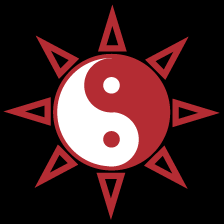Pain – The Ultimate Body Cue By Denise Morris CMT,
We have all suffered from pain; most of us try and avoid it, sometimes to our own detriment. Pain (and it’s precursors) should never be ignored, rather it should guide us. Pain in this sense has a purpose; to keep us from further injury. Take for example, low back pain. By the time you’ve reached your forties, you’ve more than likely experienced some episode of pain, stiffn
ess, and limitation in regards to your lower back. Often this resulted in time off from work, fun activities, and adequate sleep, to say the least….
Which is why future episodes of low back pain should guide your current decision making. If you’ve been raking the yard all morning and your back starts to hurt, do you acknowledge it and stop for the day or push on into the afternoon until the task is complete (regretting it the next morning)? How about road trips? You can drive until the full tank of gas is gone ignoring the dull ache that has slowly started creeping up your spine or you can stop every two hours to fill up and move around..With this change of position you improve your circulation through movement and it will make a difference to your body.
Most of us work with computers these days and know what a time suck they can be. Before you realize it, you’ve been sitting there for hours. One way you can deal with this lack of motion is by varying your job tasks so you are forced to get up and move around. Keeping books, files, the printer, even the stapler out of your reach has it’s benefits by getting up and moving. If you have to, set a timer to go off every 30 minutes and then stand for a second, shift your hips back and forth and stretch a little, and then sit back down. If you’re working on a laptop, try moving it to a higher level, like a counter top or cabinet, where you can stand and work for a while. There are also many sit/stand options available to support these options.
Make sure you’re not leaning into the screen either, which can wreak havoc on your neck and upper back as well as contribute to low back pain. The rule of thumb is, your line of reading should be approximately two inches below the top of the screen. Adjust the height of your chair, if you can, or elevate your monitor in some way. The point being, don’t ignore your pain or be afraid of it; do let it guide you in your decision making process. Remember to pay attention to your other body cues too such as:
Numbness, burning or tingling Soreness, aching or tenderness Pain, throbbing or swelling Tightness or stiffness Weakness, fatigue, or cold
This article has been about physical stressors on relatively healthy individuals. The stress most of us are more familiar with is anxiety, also plays a significant role in contributing to pain. There is growing evidence that massage therapy has the potential to help you manage both anxiety and pain while increasing your awareness of body cues, thus reducing your risk of injury and illness.
